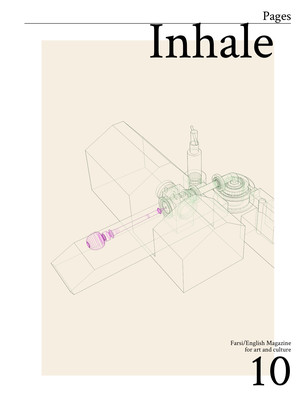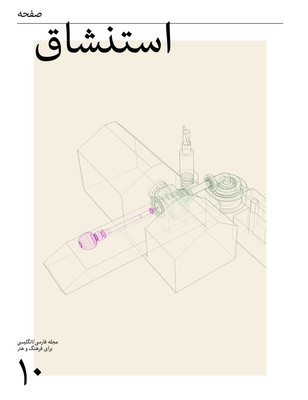Foreword to Pages 10
Why is it that certain substances insert themselves more permanently into history than others? What is this persistence that they use to permeate history and then never let go? Which human sense of continuity conspires with this peculiar persistence?
These were among the primary questions we asked ourselves when we begun thinking of opium as the underlying topic of this issue. If we were to think of how opium inserted itself in history, the most straightforward answer would probably be: as smoke and through inhalation.
Smoking is the most efficient administration of opium: a stronger level of opiate release, a more rapid impact on the nervous system and a higher rate of dependency. Traditionally opium was mostly eaten, but during the 19th century opium trade smoking almost completely replaced all previous means of opium use. With the spread of opium smoking, especially after the two opium wars (1839–1842 and 1856–1860), opium soon became the quintessential commodified substance of colonial trade, forecasting capitalist modes of production and mass consumption under the global market economy.
With this shift to smoke, the respiratory tract became an extension of the opium trade network. In other words, inhalation became proletarianized—attuned to the colonial capitalist apparatus. It wouldn’t be far-fetched to then argue that this early appropriation of the lungs anticipated the cyber-capitalist exteriorization of our organs by technologies to which we almost willfully hand over an increasing part of our biological and cognitive functions.
But has opium smoke been fully integrated into the colonial-capitalist machinery? Have there, in essence, not been undercurrents of other (even counter-) passages of smoke within the habit of smoking? In 1878 the late Qing writer Zhang Changjia writes the following paragraph in his text “Yanhua, 'Opium Talk',” published in a Qing ‘collectanea’ in Shanghai:
Weapons are evil instruments that sage kings used only when they were forced to. For today's opium utensils the word “gun” is taken to refer to the smoking shaft, while “bottom of the sea” (haidi) designates the opening of the mouthpiece, and “gate of struggle” (doumen) the opening of the bowl. Such names indicate the formidability of opium. But people become numbed to this fact by habit of frequency and end up applying dangerous instruments directly to their own bodies. That one can be fully conscious and still make such a mistake is thus easier to believe.1
When Zhang uses euphemisms such as “gun,” “bottom of the sea” and “gate of struggle,” which refer to the various components of the opium pipe, he is speaking of the deeply situated affiliation within the Chinese language between opium smoke and Western warships.2
However, Zhang is equivocal in the above quote. He pictures opium smokers who inhale smoke by passing it from the “gate of struggle” through the “gun,” across the “bottom of the sea” and into their bodies. Every inhalation is yet another passage into ‘the line of fire,’ a dangerous “mistake” made over and over again. At the same time this very “habit of frequency”, enacted in full consciousness, both numbs smokers and diminishes the dangers of the pipe/gun to the effect that they can apply it “directly to their own bodies.” In other words, through repetition a synthesis is realized that serves to designate a new opium “utensil” reassembled along an unlikely continuum between disparate parts and meanings. While Zhang is offering a cautionary tale of opium, he is also presenting the smoking pipe as a new “instrument” of semantic prosthesis (during a time when China experienced a violent accelerated transition into modernity).
The habit of inhaling an intoxicant can thus be driven toward gradual modification of the material, and potentially cultural or even political continuum of the substance. Habit may be brought about by an experience of formidable change, but it is not necessarily bound to that change. Habit is not inertia. It is rather made up of calculated actions that in their recurrence diminish the impact of outside forces (of history), and over time impregnate them with impulses and desires directed toward future changes.3
Intoxication is perhaps a state in which one is nearest to a foreign substance; where one is most attuned to it or it is most attuned to one. This is about gradations of poisonous or remedial proximity to the substance. It is possible that “one becomes accustomed over time to the most violent poisons” and “the most unhealthy air and food become the very condition of health”4––although this is contingent on whether we have (successfully shifted) time on our side. Such is also the labor of writing as habit of frequency: committed to transforming the material continuity of its objects by inspiring them with counter-passages.
The theme of this issue of Pages was triggered by the idea of opium smoke as a ‘writing machine.’ Since the early opium trade, there has been writing not only on opium, but also through opium, especially in countries linked to past and present drug networks. In this issue we are tapping into the deeply rooted relationship between writing and drugs, especially beyond the Western literary tradition, and wondering about the current conceptual and material derivatives of intoxication with which we can machinate new extremities in our chemical, historical and technological relations to the world.
- Zhang Changjia, “Yanhua, 'Opium Talk'" in Keith McMahon, The fall of the God of Money, Opium Smoking in Nineteenth-Century China (Lanham: Rowman & Littlefield Publishers Inc., 2002), 211.↩
- This linguistic affiliation is clearly unfolded in the first paragraph of Zhang’s Opium Talk: “Apian is also written yapian. In the Bencao it is called afurong. Today it is simply called yan, smoke, or dayan, the great smoke, or wuyan, the black smoke, or else it is called yangyan, Western-sea smoke. A look at the character for yan reveals that it is made up of three characters, huo (fire), xi (west), and tu (earth). Clearly when the character was created it already foretold the present day of opium: fire (bringing) earth (from the) west. It is said that at the time of the invention of writing heaven rained millet and demons wept at night. This old saying is quite applicable in the present instance too” (Zhang, “Yanhua, Opium Talk,” 196). These quotations by Zhang Changjia are taken from the English translation of “Yanhua Opium Talk" by Keith McMahon published in the appendix section of his book The fall of the God of Money, Opium Smoking in Nineteenth-Century China (Lanham: Rowman & Littlefield Publishers Inc., 2002).↩
- This notion of habit follows Felix Ravaisson’s (1813–1900) theory as presented in his book On Habit (Continuum International Publishing Group, New York: 2008). In this context, also see Mohammad-Ali Rahebi’s article, “Of Junk and Time,” written for the current issue of Pages.↩
- Felix Ravaisson, On Habit (Continuum International Publishing Group, New York: 2008), 63.↩

